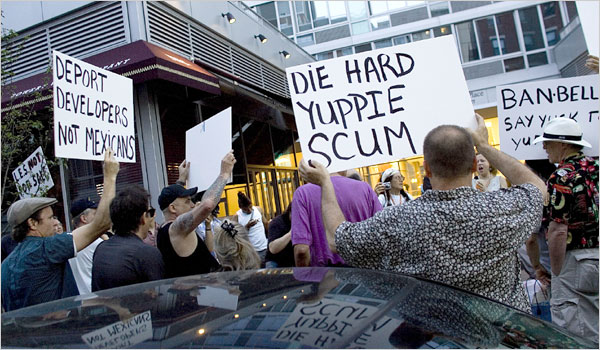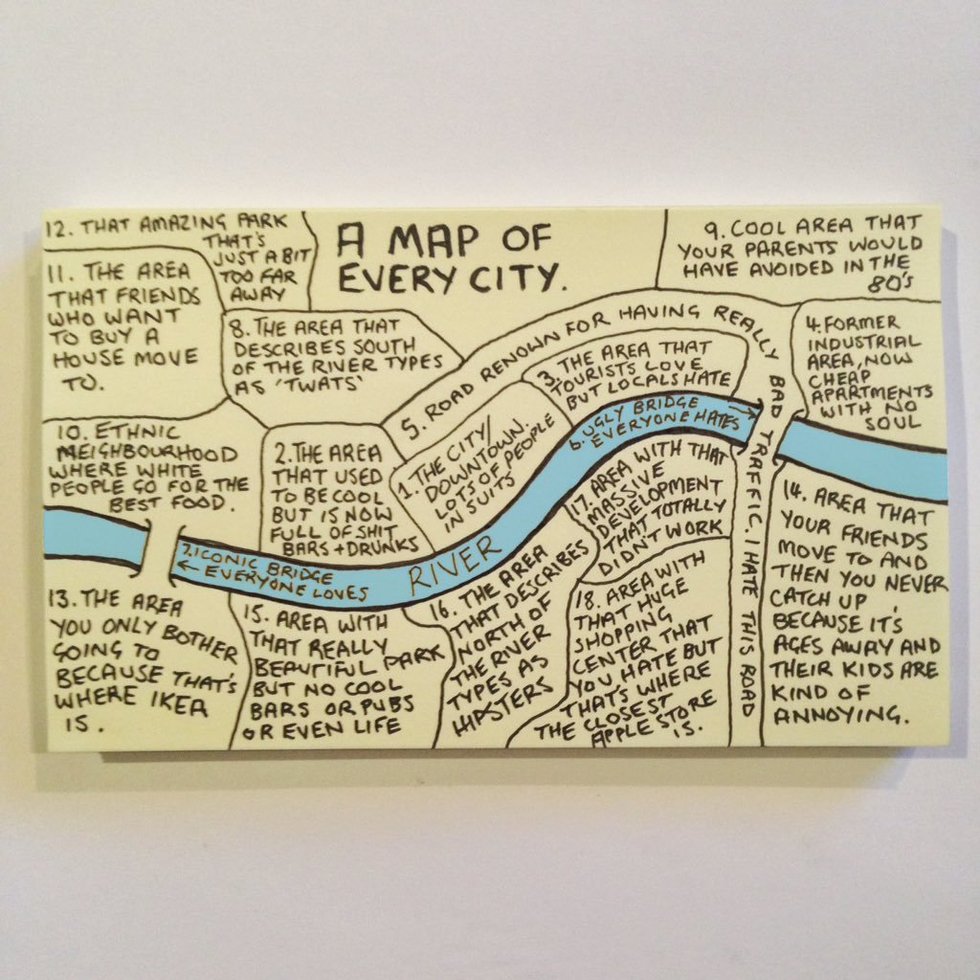
To Recap What Gentrification Entails:
A Slideshow on New York City’s Gentrification:
https://vimeo.com/165453903

Gentrification definitely is a complex, multi-faceted issue to discuss. With its uprising, this process transforms neighborhoods into more developed areas, with better “quality of living” standards and services. It molds old-fashioned, brownstone, urban areas into chic, trendy, and modern places that carry an air of sophistication. However, gentrification has come as a serious blight to many long-time residents of New York City, many of whom are negatively affected by the changes it brings along. Most people are displaced from their homes with increased rent prices, harassment from landlords, demolition of public housing projects, and unemployment from company takeovers.

We have to understand that a majority of city-dwellers who come to make New York City their home are from working middle classes, people who struggle to make ends meet and live from paycheck to paycheck. With all of reality’s difficulties that they have to face, these individuals must also suffer through the agonies of gentrification. This neighborhood change may be seen as a positive transformation from an outsider’s perspective because it alters the “look” of the city. Yet, it actually is quite detrimental for the citizens who already have resided in these areas for decades as they are forced to leave with the notion of being “unwanted.” Wealthier and more prestigious young couples and small families come to dominate because they want to indulge in their own “urban vibe.” Yet, they restructure the city to be a new “yuppie land” that is completely different from the rustic perception that has always been attached to the city. Gentrification’s spread has overtaken the long-time culture that has been iconic of New York City for centuries and has thrown out innocent civilians from their homelands. Because gentrification mainly affects ordinary individuals, it leads to and worsens many other issues that already plague the city. These include:
- Employment – as many upper-ended developments, restaurants, and corporations come to
 dominate neighborhoods, most small businesses, local factories, and mom-and-pop shops go out of business, thereby placing citizens in the realms of unemployment. Because these people tend to come from low-skilled backgrounds without much higher education, they are unable to serve in the growing technology sector or work for more advanced corporations.
dominate neighborhoods, most small businesses, local factories, and mom-and-pop shops go out of business, thereby placing citizens in the realms of unemployment. Because these people tend to come from low-skilled backgrounds without much higher education, they are unable to serve in the growing technology sector or work for more advanced corporations. - Welfare/Social Services – due to the surge of unemployment and the demands of higher rent prices, many ordinary citizens are forced to apply for welfare from the state and federal government. This makes residents more dependent on the government for aid and potentially leads to higher taxes for middle-class families and cutbacks to neighborhood improvements/needs.
- Homelessness – since there is a large increase in unemployment rates, many families are unable to pay the exorbitant rent/mortgage prices their landlords and brokers demand from them. For those who don’t qualify for federal aid, this is extremely unfortunate. Many lack the financial resources necessary to move into another working-class neighborhood, especially when they have the expenses of a family to deal with. Therefore, they are left on the streets with no decent permanent housing to remain comfortable with.
- Disproportionate Aid/Racial Discrimination – gentrification is always attached to a racial stigma. Due to the trends of wealth distribution across the city, usually those who are black or of an ethnic minority are hit the hardest with gentrification’s effects. From the long wave of racial prejudice that has affected these groups of people, many have difficulties with financial stability. They are discriminated against by landlords, merchants, and business corporations, leaving them eternally stuck as inferior classes.

What we must realize is that although New York City is an international hot-spot, which attracts many upper-class individuals to move in, it has been home to working-class citizens since its establishment. By taking away the people who in essence are the foundation of the city, it loses its cultural splendor, diversity, and homeliness as a place for everyone to have a chance at succeeding.





